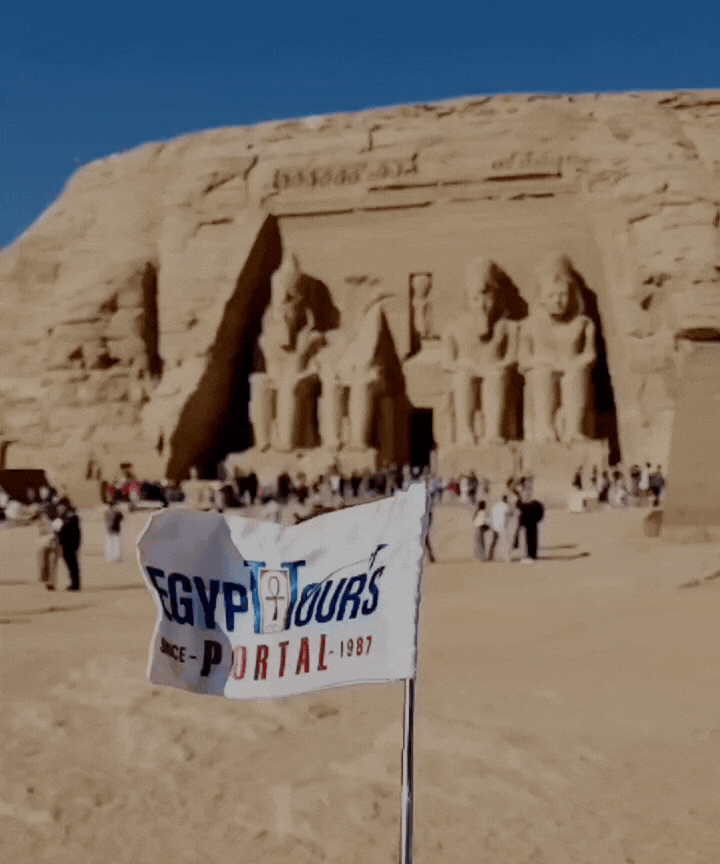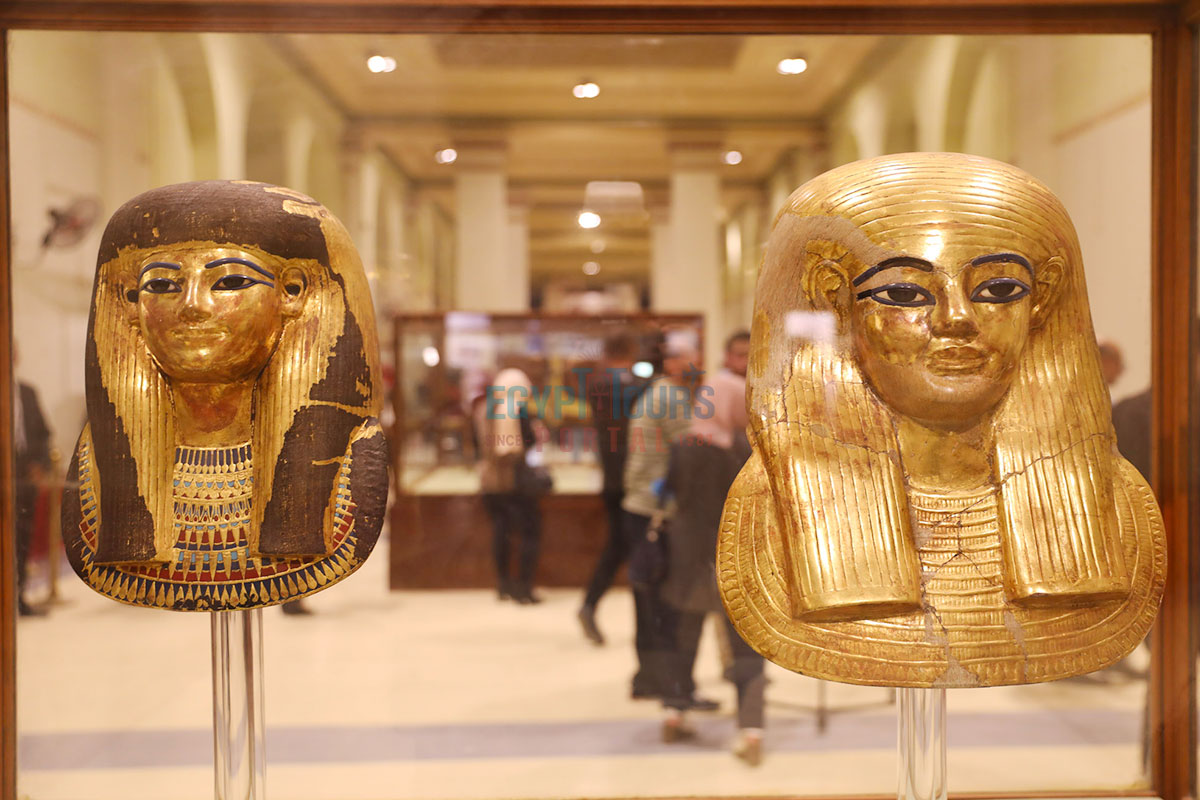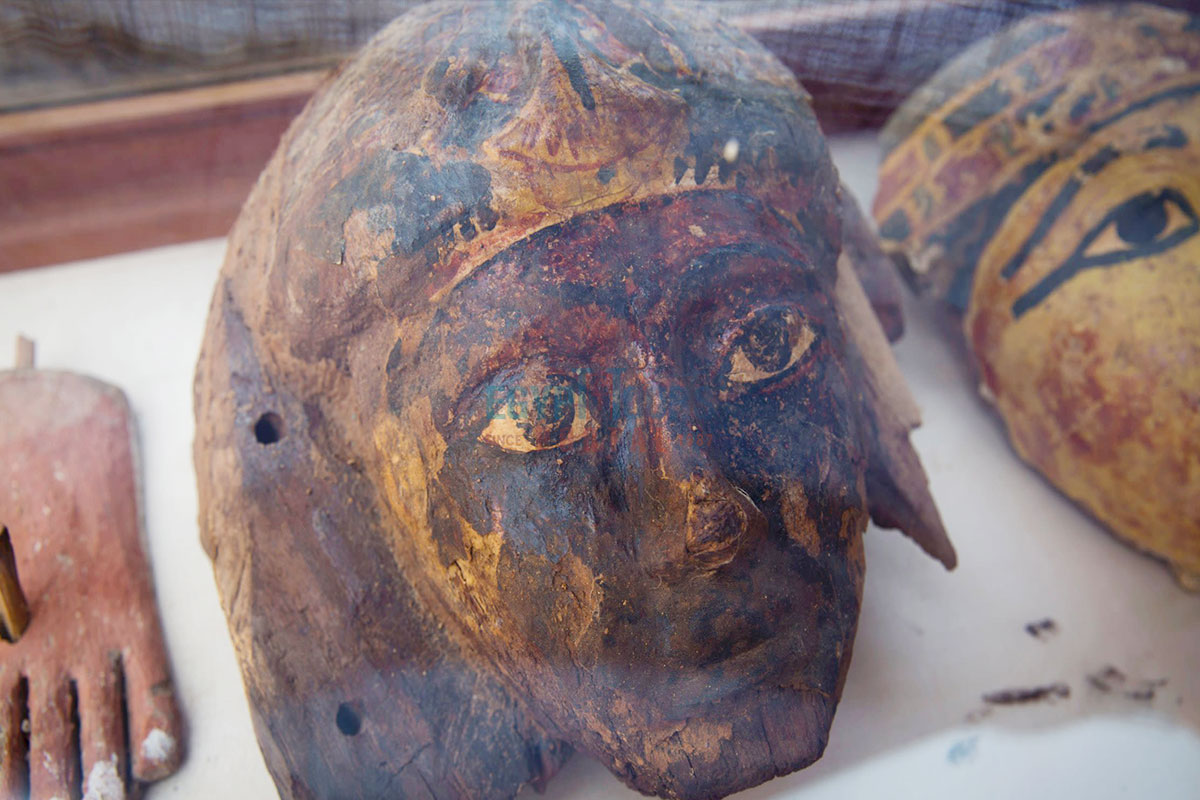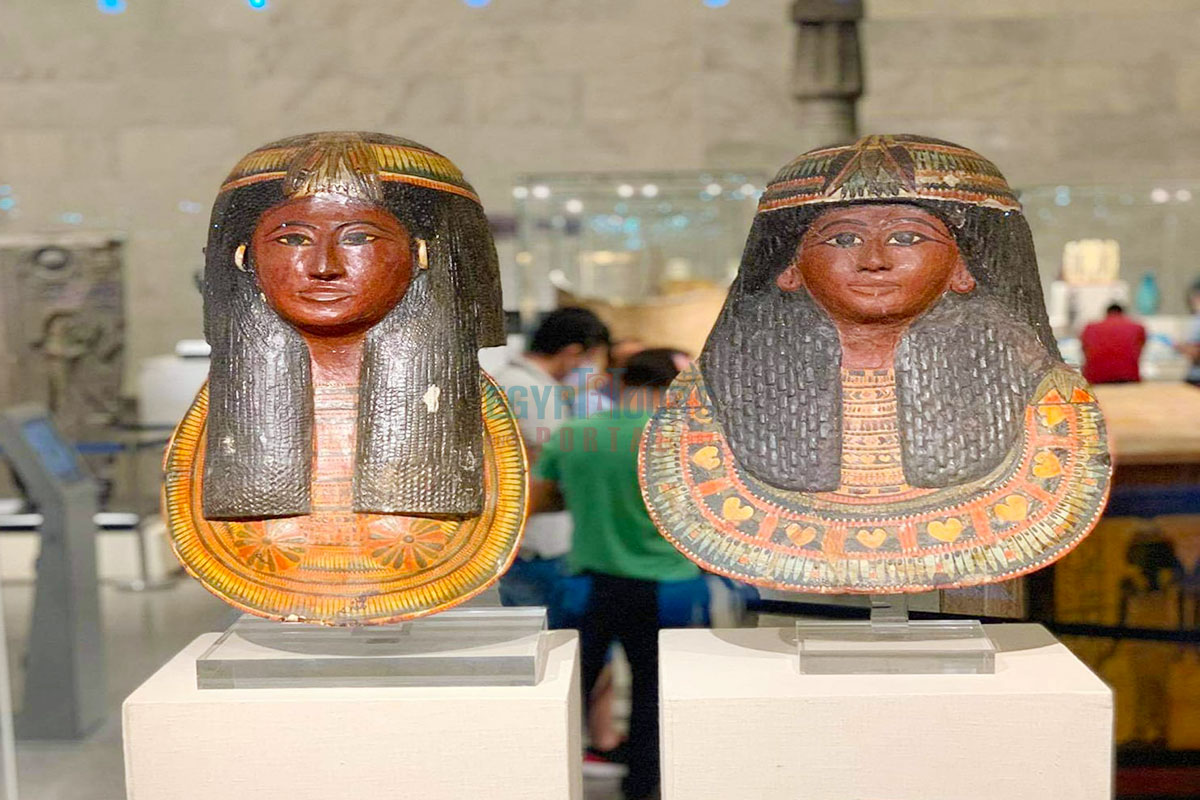Explore the deep symbolism of ancient Egyptian masks, including Tutankhamun’s iconic gold mask and ceremonial deity masks. Discover how these remarkable artifacts embodied identity, spirituality, and the soul’s eternal journey in one of history’s most fascinating civilizations.


Ancient Egyptian masks are profound symbols of a civilization deeply connected to the spiritual and divine. Worn both in life and death, these masks served as transformative tools, allowing individuals to bridge the mortal and celestial realms. Whether crafted from gold to adorn a pharaoh’s tomb, painted onto cartonnage for noble burials, or used in rituals by priests channeling the power of gods, masks embodied protection, rebirth, and immortality.
The artistry and symbolism of these masks reveal a rich tapestry of beliefs about the soul, identity, and afterlife. They protected the deceased on their journey through the underworld, ensured recognition by divine beings, and reflected the wearer’s transformation into an eternal, god-like entity. This article explores the fascinating roles of masks in Ancient Egypt and the ritualistic, funerary, and social aspects of one of history’s most captivating civilizations.
IMPORTANT NOTE:
This information does not seek to degrade or insult any religion. All the information is based on historical evidence, any similarities that you may find with your own faith or religion are from the figment of your imagination.

Ancient Egyptian masks were deeply intertwined with spiritual beliefs, serving as powerful Ancient Egyptian Symbols of protection, transformation, and rebirth. In funerary practices, masks ensured the soul (ka) could recognize its physical body, a crucial step for navigating the underworld and achieving eternal life in the Field of Reeds, the Egyptian equivalent of paradise. They also provided a divine visage for the deceased, aligning them with the gods and enabling their acceptance into the Egyptian Afterlife's divine council.
Masks were not limited to the dead; they held significant roles in the lives of the living. Priests, priestesses, and magicians wore masks during religious rituals to embody Ancient Egyptian Deities like Anubis, Hathor, or Bes. These masks allowed the wearer to channel divine authority, granting them the spiritual power necessary to perform rituals and protect the community. For example, Anubis masks, featuring jackal heads, were crucial in mummification ceremonies, signifying Anubis’s role as guardian and guide of the dead.
Masks reinforced the Egyptian worldview that the mortal and divine realms were deeply interconnected. Whether aiding the living by invoking divine assistance or ensuring the deceased’s safe passage to the afterlife, masks symbolize the seamless movement between human and spiritual existence.

Gold masks epitomized Ancient Egypt’s beliefs in immortality and divinity. Gold, associated with the flesh of the gods, was considered to have eternal, imperishable, and luminous qualities essential for the transformation of the deceased into a divine being.
The most famous example, the mask of Tutankhamun, crafted in 1323 BCE, weighs over 10 kilograms and features inlays of lapis lazuli, carnelian, quartz, and turquoise. Its inscriptions, taken from the Book of the Dead, invoked protective spells to guard the young king's journey through the afterlife. The mask’s nemes headdress and symbols of the cobra and vulture represented the unification of Upper and Lower Egypt, further emphasizing Tutankhamun’s divine authority even in death.
While gold masks were predominantly used by pharaohs, they were not exclusive to royalty. Wealthy nobles during the New Kingdom and the Third Intermediate Period also adorned themselves with gilded masks, aspiring to eternal life alongside the gods. These masks often featured protective deities, inscriptions, and cosmic motifs symbolizing regeneration and divine favor.
Gold’s reflective brilliance linked it to the sun god Ra, central to Egyptian theology. This association with Ra reinforced the deceased’s eternal life and their role in maintaining cosmic order (Ma’at). By combining artistry with profound symbolism, gold masks not only protected the deceased but also elevated them to a divine status that would last for eternity.
Explore more magnificent details about the rituals, beliefs, and customs of the religion of the ancient Egyptians.
Read More
The Ancient Egyptian Practice of Mummification sought to preserve the body as a home for the soul in the afterlife. Masks were a vital part of this process, particularly in protecting and preserving the head, considered the seat of identity and spirit.
Old Kingdom Beginnings: During the Old Kingdom (c. 2686–2181 BCE), plaster-coated linen masks were used to cover the face of the deceased. These masks were simple but ensured that the ba (personality) and ka could reunite with the body.
Middle and New Kingdom Advances: By the Middle Kingdom (c. 2040–1782 BCE), cartonnage masks—made from layered linen or papyrus stiffened with plaster—became prevalent. These masks were intricately painted with features symbolizing divine perfection. In the New Kingdom (c. 1550–1070 BCE), masks became more elaborate, incorporating protective spells and celestial imagery.
21st Dynasty Innovations: The silver and gold mask of Psusennes I (c. 1077–943 BCE) exemplifies the pinnacle of funerary mask craftsmanship. These masks provided not just physical protection but also spiritual transformation, ensuring the deceased's identity was preserved and recognized by the gods.
Masks often featured inscriptions, including spells from the Book of the Dead, and symbols of protection, like the Eye of Horus. These elements highlighted the belief that preserving one’s physical and spiritual identity was essential for achieving eternal life.

The creation of Egyptian masks combined technical skill with profound artistry from the Ancient Egyptian Craftsmen. Early masks from the Old Kingdom were made from wood or painted plaster, while later periods saw the evolution of cartonnage masks and, for the elite, masks crafted from gold and silver.
The designs were both aesthetic and functional. Features like wide eyes symbolized vigilance, while idealized expressions embodied divine harmony. Masks not only preserved the deceased’s visage but also transformed them into god-like beings, ensuring their acceptance in the afterlife.
By the Greco-Roman period (332 BCE–395 CE), masks became highly stylized and often included floral and geometric motifs. These masks were sometimes part of a full-body cartonnage set, emphasizing protection and divine alignment.
Examine more intriguing facts about the Artistic Imagination and Skill of the Ancient Egyptians.
Read More
Discovered in 1922 by Howard Carter, the mask of Tutankhamun (1323 BCE) is one of the most celebrated artifacts of Ancient Egypt. It epitomizes the grandeur of the 18th Dynasty and provides insights into the religious and cultural beliefs of the period.
Weighing over 10 kilograms, the mask is crafted from gold and adorned with inlays of lapis lazuli, carnelian, quartz, and obsidian. Its Nemes headdress is topped with a cobra and vulture, symbolizing the unification of Upper and Lower Egypt. The false beard represents the pharaoh’s divine status.
The mask’s inscriptions include protective spells, ensuring the young king’s safe passage to the afterlife. Its craftsmanship reflects the advanced metallurgical and artistic skills of the time, offering a glimpse into the sophistication of Ancient Egyptian artisans.

Masks in Ancient Egypt were profound embodiments of divine power, created to bridge the human and spiritual realms during rituals and ceremonies. By wearing masks of gods, priests, magicians, and performers symbolically assumed divine identities, channeling the deities’ powers.
Anubis Masks: Essential in mummification rituals, Anubis masks symbolized the jackal-headed god of embalming and the afterlife. Anubis's role in protecting the dead was central to Egyptian funerary practices. These masks helped officiants align themselves with the deity's divine authority, ensuring proper rites were observed to guide the deceased through the underworld.
Lion-Headed Masks: Representing Sekhmet, these masks were used in rituals of healing and destruction. Sekhmet, the goddess of war and medicine, embodied dual powers—capable of both devastation and restoration. Rituals wearing Sekhmet masks often focused on invoking her protective and curative aspects, especially during plagues or natural disasters.
Masks of Bes and Hathor: Bes, the dwarf god associated with fertility, music, and domestic protection, was often depicted in masks used during household rituals. Hathor masks represented love, joy, and fertility. Both deities’ masks were frequently worn during festivals, emphasizing their connection to life’s celebratory and nurturing aspects.
Symbolism and Ritual Use: Each mask’s design and materials enhanced its divine resonance. Jackal heads, lion faces, or depictions of Bes’s jovial expression were more than artistic choices—they were spiritual tools for invoking the gods’ presence. During temple rituals, priests wearing these masks reinforced the gods’ active participation in maintaining cosmic order (Ma’at).
Uncover bewitching facts about the Power and Meaning of the Ancient Egyptian Gods and Goddesses.
Read More
In addition to their spiritual roles, masks symbolized authority and hierarchy in Ancient Egyptian society. They were deeply intertwined with the power structures of the state and its religious ideology.
Royal Masks: The pharaoh, regarded as a living deity, often donned symbolic regalia, including masks or headdresses, during significant rituals. These items reinforced their divine status and their role as intermediaries between gods and humans. The nemes headdress or depictions like the funerary mask of Tutankhamun demonstrated their eternal connection to the divine.
Noble Masks: High-ranking officials, priests, and nobles also utilized masks to reflect their societal status. While these masks were less ornate than royal ones, they often incorporated gold leaf, vibrant colors, or symbolic motifs. They conveyed not only wealth but also proximity to divine favor.
Public Ceremonies and Festivals: During large-scale events, masks representing deities were paraded to visually affirm the pharaoh’s alignment with divine powers. These processions strengthened the connection between the state, religion, and people, ensuring loyalty and cultural unity.

Funerary masks served as an enduring testament to the divine and eternal nature of the deceased, especially Pharaohs. These masks symbolized the ruler's transformation into a god after death, ensuring they maintained authority even in the afterlife.
Tutankhamun’s Mask: Crafted in 1323 BCE, Tutankhamun’s golden mask is a perfect example of a funerary mask’s role. The cobra and vulture on the headdress symbolized protection from Wadjet and Nekhbet, guardians of Upper and Lower Egypt. Inscriptions from the Book of the Dead were etched into the mask, ensuring the young king’s safe journey to eternity.
The New Kingdom and Third Intermediate Period Innovations: Funerary masks during these eras grew increasingly ornate, with gilding, inlaid stones, and intricate detailing. These masks were not merely artistic creations but divine tools designed to guide and protect the deceased in the afterlife.
Eternal Power: By presenting the deceased in an idealized, god-like form, masks reinforced the pharaoh’s role as a cosmic ruler, maintaining balance (Ma’at) in both the mortal and spiritual realms.

While masks for royals were lavish, masks also served non-royals in funerary and ritual contexts. Their materials and craftsmanship varied based on the individual's social status.
Cartonnage Masks for the Elite: Wealthy Egyptians used cartonnage masks, crafted from layers of papyrus or linen stiffened with plaster, painted with symbolic motifs, and adorned with vibrant pigments. These masks highlighted the individual's spiritual aspirations and societal standing.
Middle-Class and Commoner Use: During the Greco-Roman period (332 BCE–395 CE), masks became more widespread due to cheaper production methods. Terra-cotta and clay masks allowed the middle class to participate in funerary traditions once reserved for the elite.
Everyday Rituals: Masks like the Bes mask from Kahun show their use beyond death. Used in household ceremonies, they invoked divine blessings for fertility, protection, and health, illustrating the democratization of mask usage in Egyptian spirituality.
Ancient Egyptian masks were profound symbols of identity, divinity, and the afterlife. Serving as spiritual tools, they bridged the mortal and divine realms, preserving the soul’s journey toward eternal life. From the gold masks of royalty to the cartonnage masks of elites and commoners, these artifacts reflected Egypt's cultural emphasis on immortality, cosmic harmony (Ma’at), and transformation.
Intricately crafted and rich with symbolism, the masks embody the civilization's artistry and spiritual devotion, leaving a timeless legacy of their beliefs and practices. Discover our magnificent Egypt Tour and unique Nile Cruise, and witness this immortal civilization's magical artifacts, with much to offer.
Private 4 Days Cairo Tour Packages 4 days Cairo Egypt tour package will offer a bles...
Tour Location: Cairo – Giza...
Stunning 5 Days Cairo and Alexandria Tour Package 5 days Cairo and Alexandria tour p...
Tour Location: Cairo/Giza/Alexandria...
Exceptional 6 Days Cairo, Luxor & Aswan Tour Package 6 days Cairo, Luxor & A...
Tour Location: Cairo/Giza/Aswan/Luxor...
Amazing 7 Days Cairo and Hurghada Holiday 7 Days Cairo & Hurghada holiday will e...
Tour Location: Cairo – Giza – Hurgh...
Masks, especially burial masks, were believed to protect the deceased in the afterlife, allowing them to be reborn and ensuring their spiritual safety during their journey.
Ancient Egyptian masks were typically made from materials such as wood, linen, plaster, and gold. The most famous example, the mask of Tutankhamun, was made of gold and inlaid with precious stones.
Burial masks were placed over the faces of the deceased to ensure that their spirits could recognize and return to their bodies in the afterlife. They were also meant to symbolize the eternal life of the deceased.
The mask was crafted to resemble the deceased so their spirit could identify their body and return to it. It was also a means of preserving the identity of the person for eternity.
The mask of Tutankhamun is one of the most famous artifacts in Ancient Egypt. It represents the young king's status and is a symbol of the wealth and craftsmanship of the time. Made of gold and semi-precious stones, it was designed to ensure his protection in the afterlife.
Yes, masks were also used in religious ceremonies and rituals, particularly during festivals and in the worship of gods. Priests would wear masks to represent deities during ceremonies.
Yes, masks were often placed over the face of mummies, particularly in royal burials, to help protect the deceased's identity and ensure their resurrection in the afterlife.
The designs of Egyptian masks often incorporated symbolic elements, such as the use of gold to represent the divine or immortality, and features of gods or goddesses to invoke protection and favor in the afterlife.
While royal burial masks like that of Tutankhamun are the most famous, masks were also made for non-royal individuals, though they were often less elaborate and made from less expensive materials.
Masks were often decorated with intricate detailing, such as painted facial features, inlaid gemstones, and sometimes gold leaf, to give them a lifelike or divine appearance.
The entire country of Egypt deserve to be explored with its every heavenly detail but there are places that must be seen before any other such as the breathtaking Hurghada's red sea, The wonders of Cairo the pyramids of Giza, the great sphinx, the Egyptian Museum, Khan El Khalili Bazaar, the wonders of Luxor like Valley of the Kings, Karnak & Hatshepsut temple and the wonders of Aswan such as Abu Simbel temples, Philea temple, Unfinished obelisk and The Wonders of Alexandria like Qaitbat Citadel, Pompey's Pillar and Alexandria Library. Read more about the best places to visit in Egypt.
If you want to apply for a Visa On Arrival that lasts for 30 days then you should be one of the eligible countries, have a valid passport with at least 6 months remaining and pay 25$ USD in cash, as for the E-Visa for 30 day you should have a valid passport for at least 8 months, complete the online application, pay the e-visa fee then print the e-visa to later be presented to the airport border guard. You could also be one of the lucky ones who can obtain a free visa for 90 days. Read more about Egypt travel visa.
Egypt has a variety of delicious cuisines but we recommend “Ful & Ta’meya (Fava Beans and Falafel)”, Mulukhiya, “Koshary”, a traditional Egyptian pasta dish, and Kebab & Kofta, the Egyptian traditional meat dish.
The best time to travel to Egypt is during the winter from September to April as the climate becomes a little tropical accompanied by a magical atmosphere of warm weather with a winter breeze. You will be notified in the week of your trip if the Climate is unsafe and if any changes have been made.
You should pack everything you could ever need in a small bag so you could move easily between your destinations.
We have been creating the finest vacations for more than 20 years around the most majestic destinations in Egypt. Our staff consists of the best operators, guides and drivers who dedicate all of their time & effort to make you have the perfect vacation. All of our tours are customized by Travel, Financial & Time consultants to fit your every possible need during your vacation. It doesn't go without saying that your safety and comfort are our main priority and all of our resources will be directed to provide the finest atmosphere until you return home.
You will feel safe in Egypt as the current atmosphere of the country is quite peaceful after the government took powerful measures like restructuring the entire tourist police to include all the important and tourist attractions in Egypt. Read more about is it safe to travel to Egypt.
Wear whatever feels right and comfortable. It is advised to wear something light and comfortable footwear like a closed-toe shoe to sustain the terrain of Egypt. Put on sun block during your time in Egypt in the summer to protect yourself from the sun.
The best activity is by far boarding a Nile Cruise between Luxor and Aswan or Vise Versa. Witness the beauty of Egypt from a hot balloon or a plane and try all the delicious Egyptian cuisines and drinks plus shopping in old Cairo. Explore the allure and wonders of the red sea in the magical city resorts of Egypt like Hurghada and many more by diving and snorkeling in the marine life or Hurghada. Behold the mesmerizing western desert by a safari trip under the heavenly Egyptian skies.
There are a lot of public holidays in Egypt too many to count either religious or nation, the most important festivals are the holy month of Ramadan which ends with Eid Al Fitr, Christmas and new years eve. Read more about festivals & publich holidays in Egypt.
Egypt is considered to be one of the most liberal Islamic countries but it has become a little bit conservative in the last couple of decades so it is advised to avoid showing your chest, shoulders or legs below the knees.
Arabic is the official language and Most Egyptians, who live in the cities, speak or understand English or at least some English words or phrases. Fewer Egyptians can speak French, Italian, Spanish, and German. Professional tour guides, who work in the tourism sector, are equipped to handle visitors who cannot speak Arabic and they will speak enough English and other languages to fulfill the needs of all our clients.
The fastest way is a car, of course, a taxi. If you are in Cairo ride a white taxi to move faster or you could board the fastest way of transportation in Egypt metro if the roads are in rush hour.
The temperature in Egypt ranges from 37c to 14 c. Summer in Egypt is somehow hot but sometimes it becomes cold at night and winter is cool and mild. The average of low temperatures vary from 9.5 °C in the wintertime to 23 °C in the summertime and the average high temperatures vary from 17 °C in the wintertime to 32 °C in the summertime. The temperature is moderate all along the coasts.
It is the home of everything a traveler might be looking for from amazing historical sites dating to more than 4000 years to enchanting city resorts & beaches. You will live the vacation you deserve as Egypt has everything you could possibly imagine.









